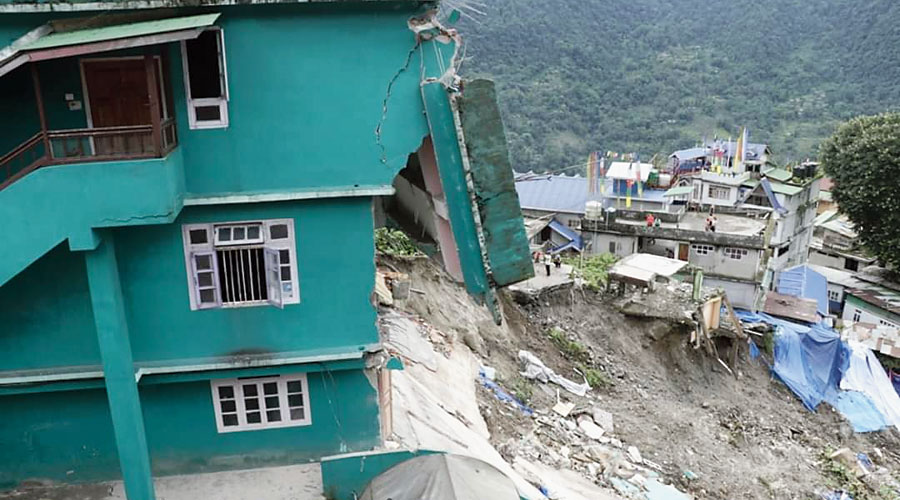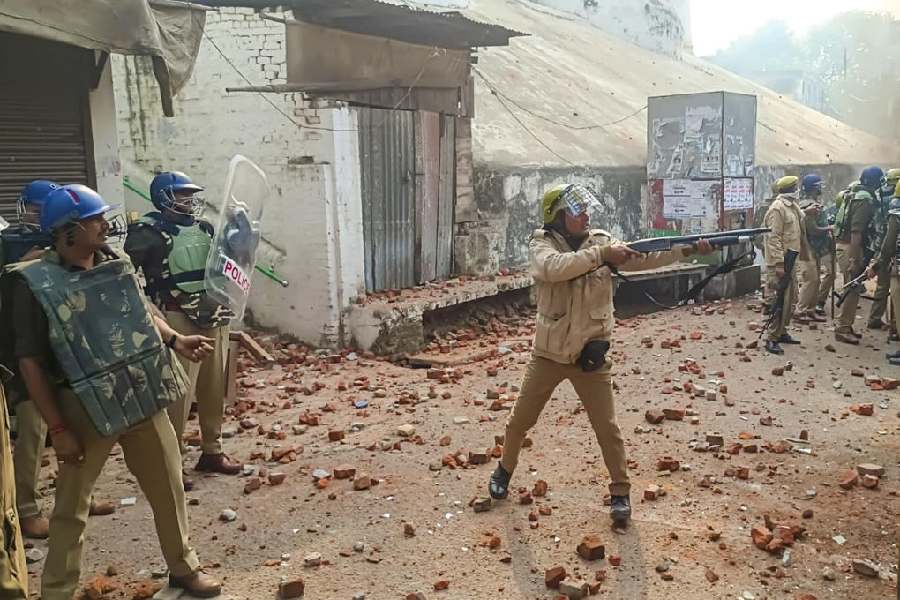Very heavy rains over the past 24 hours inundated large areas in Jalpaiguri, Cooch Behar and Alipurduar districts of north Bengal and triggered landslides in neighbouring Sikkim.
Alipurduar town recorded 345mm of rainfall during the period, resulting in an alarming rise in the water level of the Kaljani river. The sluice gates of the Alipurduar municipality have been locked and 15 out of the 20 wards of the town are under water.
At some places in the town, the water level is as high as waist length.
The civic body used eight pump sets to suck water from the town and into the Kaljani river. Six boats were pressed into service to shift people to shelters at higher places while others have been provided with tarpaulin sheets to protect them from the rains.
People have expressed anger at the lack of drainage system in the town. “The Alipurduar municipality is 70 years old, but it has yet to develop a proper drainage system. Political parties of all hues promise to address the issue at the time of elections, but conveniently forget all once they come to power,” said a resident.
In many tea gardens of the Dooars, roads have been damaged, culverts washed away, tea bushes eroded and communication disrupted. No plucking could take place in many tea gardens because of the torrential rainfall.
Surendra Kumar Meena, the district magistrate of Alipurduar, visited the embankment in the Subhashini Tea Estate and Central Dooars Tea Estate and inspected the repairs.
In Jalpaiguri district, the water level of the Teesta river has increased, affecting more than 1,000 people in the Mainaguri block. The affected people have taken shelter on the embankments. Ward 25 of Jalpaiguri town, too, is under water. The district recorded 145mm of rainfall in the past 24 hours.
The Trinamul Congress has opened a community kitchen for the affected people.
Cooch Behar district recorded 136mm of rainfall in the past 24 hours. The water level of the Torsha has risen and the affected people have been shifted to higher places. Disaster management team and civil defence personnel have been engaged to tackle the situation.
In Sikkim, heavy rains triggered multiple landslides, disrupting road links and damaging houses in different parts of the state, particularly in West and North districts.
The worst affected is West Sikkim where landslides have washed away road formations at some places and blocked roads at others.
“About 10 road links in the district, including Rimbi-Yuksom, Yuksom-Tashiding, Chongrang-Labdang and Rimbi-Khechepalri, have either been severed or blocked because of landslides,” said an official of the district administration.
In North Sikkim, at least 11 villages in Dzongu continued to remain cut off from the rest of the state because of landslides.
In Mangan, the district headquarters, a slide brought down a portion of a multi-storied building that had suffered cracks earlier in June-end. No one was injured in the incident.
“Landslides have either partially or completely damaged many houses in other parts of the state as well. Our officers have spread out in the field to make an assessment. We will be able to give a figure once they submit their reports,” said a source in the Sikkim State Disaster Management Authority.











